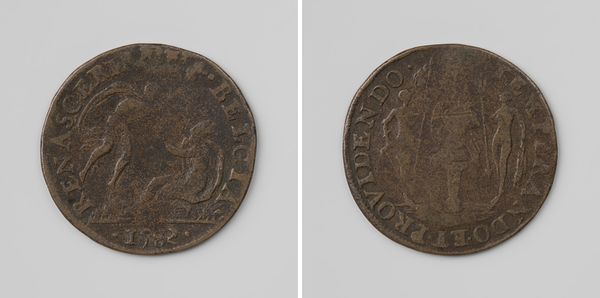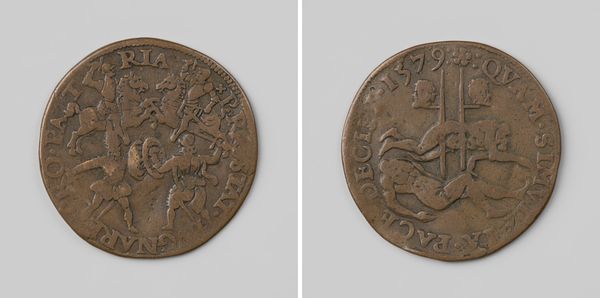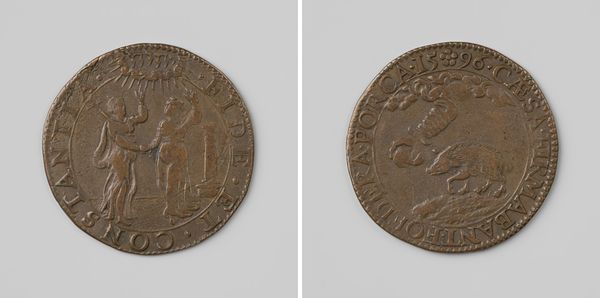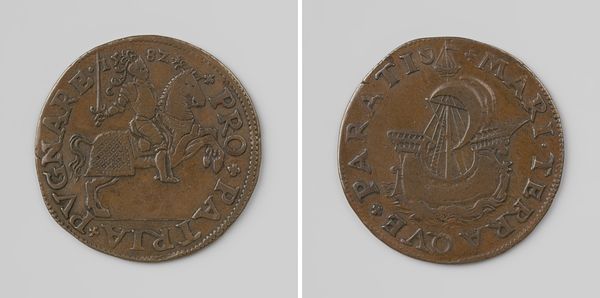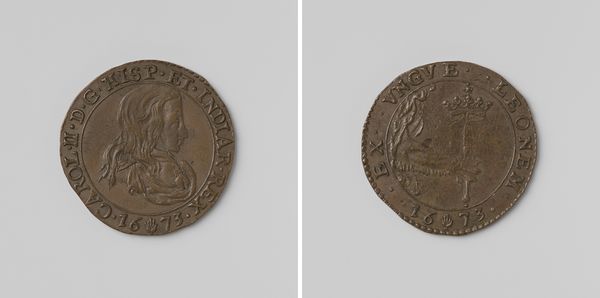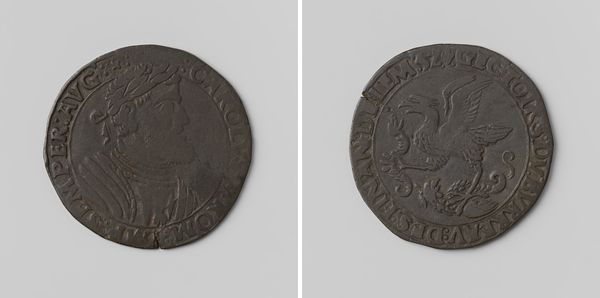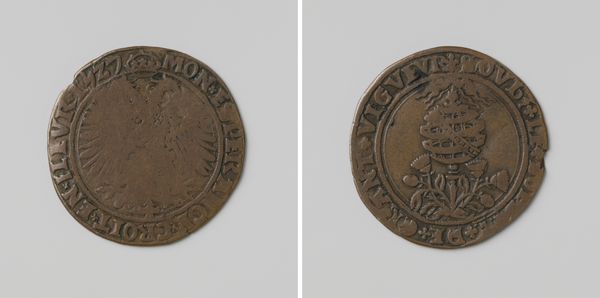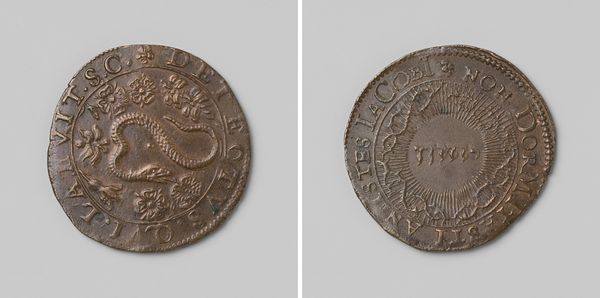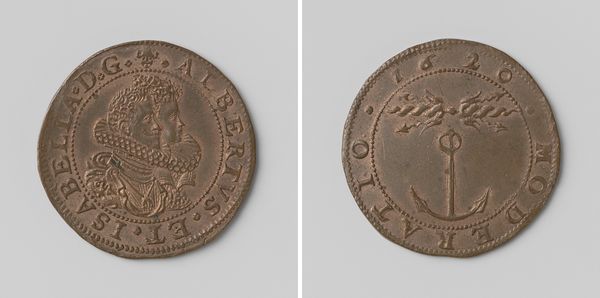
Allegorie op de aankomst van Francois-Hercule, hertog van Anjou in de Nederlanden 1582
0:00
0:00
carving, relief, bronze, sculpture
#
portrait
#
decorative element
#
carving
#
allegory
#
relief
#
bronze
#
sculptural image
#
ancient-mediterranean
#
sculpture
#
carved
#
history-painting
Dimensions: diameter 2.9 cm, weight 5.86 gr
Copyright: Rijks Museum: Open Domain
This bronze coin commemorating the arrival of François-Hercule, Duke of Anjou in the Netherlands, was struck in 1578 by an anonymous maker. Coins like this one are usually made by die-striking, a process which involves hammering a metal die into a blank. The pressure forces the material to conform to the engraved pattern. Minting was a highly skilled and extremely physical job. Although this coin is unsigned, it would have been made in a workshop employing specialist engravers and metalworkers, under the purview of civic authorities keen to control the message being circulated. The coin’s imagery reflects the political context, with allegorical figures representing the hope that Anjou’s arrival would bring renewed prosperity to the region. In its material qualities, this coin is a testament to the labor and economic forces that underpinned 16th-century European society. It is a reminder that objects, even those as small as a coin, can carry profound historical meaning.
Comments
No comments
Be the first to comment and join the conversation on the ultimate creative platform.
